Pilates
Table of Contents
What is Pilates?
Pilates is a type of exercise that targets deep postural muscles to retrain them and enhance core stability. To assist you enhance your strength, coordination, and flexibility, the physiotherapists will incorporate Pilates into your exercise regimen in addition to treatment. or perhaps you might like to enroll in one of the Pilates sessions. Pilates is a type of exercise that focuses on strengthening the body with a focus on core strength. This contributes to overall fitness and well-being. Pilates, like Yoga, focuses on posture, balance, and flexibility.
Introduction
Pilates is an exercise program that makes use of specialized equipment and is intended to improve posture, physical flexibility, and mental awareness. Joseph Hubertus Pilates, a German of Greek descent and a mother who was a neuropathy, created the method. Pilates was weak and ill as a child due to his rickets, asthma, and rheumatic disease. He became extremely interested in practicing bodybuilding, gymnastics, yoga, and “kung Fu” because he realized how important it was for him to take care of his physical health. At the age of 14, when his musculature was fully developed, he was invited to model photographs of anatomical diagrams.
He relocated to England before he was 30 and worked as a boxer, circus performer, and self-defence instructor. He was sent to an internment camp when World War I broke out, where he taught and developed his “Contrology” system of mat exercises. After the war, Pilates went back to Germany and worked with Rudolf Laban and other significant dance and fitness specialists. He moved to the United States at the age of 42, where he established his first studio along with his wife Clara. His approach quickly gained popularity among well-known dancers who required assistance with correct training, recovery, and rehabilitation as well as who wished to improve their awareness of the ability of the mind to control muscles.
Pilates Method
Pilates contains many advantages as a method and an exercise movement. Its systematic application results in improved circulation and lung function. Additionally, it raises bone density and joint health. It’s crucial to keep in mind that every Pilates exercise should be performed gently and incorporate all six of the fundamental principles.
Concentration– Pay close attention to the starting position, relaxed, smooth motions, and each body part. Do not allow yourself to get distract and maintain your attention.
Breathing– oxygen reenergizes the body and the mind. Deep breathing helps to calm the body, clear the lungs, and improve focus. To comprehend how the body works, coordinate breathing with movement.
Control– Exercises must be performed under complete control of the muscles.
Centering– All movements begin with centering, which involves activating the core muscles (the pelvic floor muscles, lumbar multifidus, transversus abdominis, diaphragm, and their assistants, the erector spinae, latissimus dorsi, gluteus maximus, oblique abdominis, and rectus abdominis). Centering improves balance and posture. In other terms, it is referred to as the body’s powerhouse. The ‘powerhouse’ or core stabilization is one of Pilates’ main objectives.
Precision– Focus on each exercise with precision. To reap their benefits, they must be carried out appropriately.
For movement– Every movement should begin with a firm centre and flow slowly and gently.
Types of Pilates

Pilates exercises that use a mat and exercises that need specialised equipment (apparatus) are often separated into two groups.
Equipment for Pilates workouts is also divided into categories based on size and whether it may be used at home or in a studio.
- Classical Pilates.
- Mat Pilates.
- Contemporary Pilates.
- Reformer Pilates.
- Clinical Pilates.
Classical Pilates
From the 1920s, Pilates. Joseph Pilates designed his Pilates workouts to be a challenging total-body and mind workout that included transitions between exercises and were performed in a certain order.
The body is guided through a full range of motion in traditional Pilates routines, which typically include mat and apparatus work.
Mat Pilates
The most convenient type of Pilates is mat work because you can practice it in almost any place and with minimal equipment. This typically makes it much easier to do in a class and considerably inexpensive.
You’ll concentrate on understanding the basic Pilates movement skills during a beginner’s mat Pilates session if you’re new to Pilates.
Due to the fact that exercises may be change to improve complexity and intensity while using your own body weight as resistance, mat Pilates is also great for more experienced students. You truly must understand what your body is doing in space because there is no mechanical support!
Mat Pilates has numerous health advantages, including strengthening your hips, glutes, shoulders, upper body, lower back, and pelvic floor. Like the majority of Pilates, mat Pilates also has a variety of advantages for mental health, including mindfulness, stress reduction, and relaxation due to the breathwork.
Contemporary Pilates
Modern knowledge of the body and biomechanics is also incorporate into Contemporary Pilates, which is a version of Classical Pilates coupled with modern types of exercise like physiotherapy.
The majority of the time, Contemporary Pilates sessions will differ depending on the instructor’s teacher training, but they can also be influenced by the student’s aspirations, goals, and health.
Exercises are frequently demonstrated with a “neutral pelvis”; for instance, when lying on your back, the lower spine will have a space between it and the floor while the tailbone and ribs will be heavier. Your spine’s natural contours follow by this.
This enables the incorporation of equipment and props as well as alterations to exercises, as well as a more functional approach that can be more easily adjusted to you.
This makes it ideal for Pilates clients who are recovering from an injury, are pre-natal, or are post-natal.
Reformer Pilates
As suggested, reformer Pilates makes use of the Pilates reformer machine. Given that the machine is made to impart resistance to all of the Pilates exercises, it is probably more intense and dynamic than a mat Pilates session. The reformer, however, can truly benefit you if you are having trouble moving, are only partially weight-bearing, or are going through rehabilitation because the springs can also operate as an aid.
The Pilates reformer machine has a platform, sliding carriage, ropes, and pulleys to assist the body in working eccentrically against resistance, which improves posture, flexibility, strength, and endurance.
Due to the fact that customers do not need to carry all of their weight via their legs while vertically loaded, reformer Pilates is also excellent for injury rehabilitation. This is crucial if you have had knee surgery or are dealing with a knee injury.
No matter your skill level, reformer Pilates may be customized for both beginners and more experienced practitioners, assisting you in achieving your health and well-being objectives.
Clinical Pilates
Our area of expertise at Complete Pilates is clinical Pilates, which delivers a customized experience for each person.
A certified physiotherapist will either instruct or supervise a 1:1 clinical Pilates session at Complete. A preliminary one-on-one evaluation will be done to fully understand your medical background and any existing medical concerns you might have. This is meant to make it easier for your physiotherapist or professional Pilates instructor to customise your session to fit your goals and rehabilitation.
Clinical Pilates is appropriate for everyone, regardless of present injuries, recent surgeries, recurrent or chronic pain, having a baby, or being pregnant.
Clinical Pilates will assist to increase core strength, correcting muscular imbalances, aid rehabilitation, and avoiding future injuries by using safe, effective, and targeted Pilates movements.
Equipment for Pilates

Large equipment (apparatus): The reformer is likely the most well-known piece of large apparatus (apparatus) that you will see in a Pilates class.
Joseph Pilates also created the tower, which is a piece of studio equipment that is connected to the reformer. The tower can be attached to a door at home in other configurations. Since it requires a lot of training, the Cadillac, also known as the trap (trapeze) table, is often utilized in individual sessions at Pilates facilities. The Pilates chair and ladder barrel are a couple of other substantial pieces of studio equipment.
Small equipment: Smaller Pilates apparatuses are frequently used during mat exercises to provide resistance or improve balance. Dumbbells, resistance bands, various-sized exercise balls, a foam roller, a tennis ball, a therapy ball, and the Pilates ring, or “magic circle,” another invention of Joseph Pilates, are all examples of this.
Mat Work
Pilates mat classes can take in-person, online, and at home. The exercises might technically be done on a yoga mat, however, a Pilates mat is not the same as a yoga mat. Yoga mats are thinner and stickier, but Pilates mats are bigger, thicker, and denser, and they typically have a smoother surface. Pilates mats are typically provided by Pilates studios, but you can also buy your own to use at home. Some Pilates exercises can perform on the floor or on a mat.
Additionally, there are hybrid Pilates courses that incorporate additional mat-based exercises along with traditional Pilates techniques. For instance, many studios provide classes that combine Pilates and yoga. Yoga and Pilates are similar in that they both focus on the breath and physical well-being, but they are not the same. Pilates is a physical discipline, whereas yoga is by definition a spiritual one.
Benefits of Pilates:
By utilizing an eccentric contraction, a type of muscular contraction, Pilates develops long, strong muscles.8 Pilates encourages flat abs naturally as a result of a training program that places a focus on skeletal alignment, flexibility, and core strength. The deep, interior muscles of the back and abdomen are referred to as the core muscles.
The six principles, along with core stability and strength, are what distinguish the Pilates approach from other forms of exercise. For instance, in weightlifting, the development of arm or leg strength may be the only focus, with the rest of the body being neglected. The focus of swimming or running may be on pumping the arms and legs, but the core may not be used at all.
Any sport can benefit from learning how to use the core muscles with practice, but Pilates teaches this integrative, full-body strategy right away. Developing core muscle strength, the other physical benefits of Pilates include:
Flexibility: Pilates exercises strengthen the muscles in the core and increase flexibility, which also widens the range of motion. Flexibility may help you avoid injury, ease tension in your muscles, and maintain your mobility and range of motion as you age.
Functionality: Strong, stable core muscles support the spine during a variety of functional, graceful movements by collaborating with the superficial muscles of the trunk. The spine may feel less strained and be able to move more easily and effectively.
Stability: When the spine is supported by the core, the bones can move into the best position to support the stability of the body.. These exercises improve posture and balance by strengthening the muscles around the joints.
It helps you get stronger and adopt a better posture, and it also boosts your energy and encourages weight loss. Pilates exercises can also change to meet the demands of a certain person. The Pilates method may adapted to practically everyone, including dancers, athletes, elders, women recovering from pregnancy, and people through physical rehabilitation. You can benefit from moving your body with form, function, and grace whether you’re a novice or an expert.
Benefits of Pilates:
Improved strength
Improved posture
Efficient movement while performing daily tasks
Accessibility
Reduce pain
Correct and enhance your posture
Improve your spine’s elasticity and strength.
Promote overall fitness
Increase the range of movement of joints
Improve breathing control
Stress relief and relaxation
Relieving pain:
Bar claims that Pilates provides therapeutic and preventative advantages. With the practice, you could manage a persistent musculoskeletal condition or recover from an existing injury. Additionally, it helps you in creating a healthy baseline so that you can recover more quickly when such injuries or problems do occur.
Additionally, having proper alignment makes your gait stronger and straighter, which can make exercising easier and help reduce falls.
Core strength:
The fact that Pilates focuses primarily on developing core strength is one of the reasons it’s such a great workout. Bar claims that the core of the body goes well beyond what most people think of as its location in the abdomen. Consider your trunk instead of your body, perhaps.
Posture:
Good posture is easier to achieve when your core is strong and in alignment, which is a seemingly minor improvement but may have a big impact on many aspects of your life.
According to Bar, “relaxing and enhancing your muscles leads to big help for your body.” Consider settling down as an example. “When you’re slumped against the back of a chair, you’re shrunk down, putting pressure on your lower back,” she claims. Additionally, hunching affects your digestion and respiration.
Balance and coordination:
Once more, our core truly is what it says it is: our centre. Weakness or alignment issues make it more difficult for us to locate our centre of gravity, which increases our risk of getting hurt, especially when we’re trying to coordinate several actions at once. Pilates can help you find and keep your balance by strengthening your core.
Body perception:
Concentrating on your body and breathing is essential to Pilates, much like in yoga and meditation. If you are more aware of your body, you will be able to better understand things like where your stress is stored, which muscles are the strongest and how they make up for weaker muscles elsewhere, and what makes you feel your best. You may be able to better understand the messages your body sends you as a result of that education.
Breath control:
Pilates is an exercise that emphasizes conscious breathing just as much as it does the body, similar to yoga and many other mindfulness techniques. In addition to enabling you to perform at a better level and deepen a stretch, managing and being aware of your breath, according to studies, can also help you cope with stress. Allowing the breath guidance you receive in a Pilates class to carry over into your regular life may make you more adept at managing challenging circumstances and emotions.
Mental health and well-being:
It is now well-established that exercise is good for your mental health and well-being.
Pilates gets your heart rate up while not being a really intense workout and blends deep stretches with strength and resistance training. Consider Pilates as a supplement to your existing mental health care, not as a replacement for it.
Is Pilates Right for You?
As we see in Pilate’s body advertising now, Joseph Pilates did not discuss long, thin muscles or flat abs when he created this technique. He was fascinated by the human body as a whole, as a source of health and vitality, from which flat abs, better posture, and balanced.
Various modifications and adaptations can be made to Pilates exercises based on your age, weight, physical condition, and level of fitness. People of different skill levels and capacities can perform the exercises safely while being physically challenged due to the adaptations built into the design of the workouts.
When deciding whether Pilates is suited for you, it’s crucial to take your goals into account. While building total-body strength may enhance your performance in another sport or physical activity, strengthening your core can assist relieve pain and stiffness in the lower back. Pilates may be the right exercise for you if you’re seeking a low-impact activity that can support overall health, weight loss, and weight management. You’ll undoubtedly gain strength, balance, and a greater understanding of your body’s movements as a result.
Who will Benefit from Pilates?
Pilates is beneficial to everyone. Any trained physiotherapists utilize Pilates to treat a range of ailments, including:
Back pain
Spinal problems
Arthritis
Poor posture
Injury Rehabilitation and Prevention
Before and after pregnancy
Neurological conditions
Chronic pain conditions
Post-surgery
How to start doing Pilates:
There are a few tips to help you get started in Pilates:
Consult your physician:
Always with a healthcare professional before beginning a new exercise regimen. People with a variety of chronic medical issues can benefit greatly from Pilates, but you may need to modify your routine significantly depending on your personal situation. Speaking with a doctor is especially crucial if you are hurt or recovering from surgery. Pilates has the potential to be therapeutic, but beginning too soon can make matters worse.
Make sure you have a qualified instructor:
Even if you’re practicing mat movements at home with live or recorded video instruction, according to Bar, you still need a skilled Pilates instructor. Although teaching Pilates does not require a license, you can find out if an instructor is a part of any local professional associations or regulatory authorities. It’s a good idea to read reviews and ask friends for ideas. Finding a Pilates instructor with advanced training is especially crucial if you’re doing the exercise to address a particular health issue. Patience is one quality of an effective teacher. The exercises in Pilates, whether performed in a group or one-on-one setting, must be at your level and must gradually increase in difficulty.
Start slowly:
It’s crucial to start your Pilates practice slowly and easily before working your way up to higher difficulty levels, even if you’re a fitness enthusiast. You should anticipate feeling sore because you’re training your body to move differently. You run the risk of hurting yourself if you try to move too quickly.
Using a mat is not necessarily “easier” than using a reformer:
Both types of Pilates have advantages and disadvantages, and neither is simple. In truth, both methods are employed in many studio programs. Bar argues that when you utilize a mat, “You’re exercising your body against gravity. Freeform Pilates may be worse for your back than reformer work. Bar adds that although reformers may be bought for use at home, it’s crucial to engage with a trainer to learn the proper alignment. They’ll keep an eye on you as you work out to ensure that every movement is done safely and effectively.
Follow what is right:
It’s a prevalent misperception that Pilates can only be practiced by wealthy and athletic people. The price can be high, but you can frequently discover good offers if you do some research. For instance, purchasing sessions or class packages frequently lowers the cost of classes. Consider your fitness level, financial situation, and degree of comfort when you choose the format of your Pilates practice, such as studio vs. home, solo vs. group, mat vs. reformer, etc. And if necessary, don’t be hesitant to switch things up.
The best way to learn Pilates is in person, ideally one-on-one, and is especially recommended if you want to use a Pilates machine like the reformer or Cadillac. However, you can also learn through the combination of in-person instruction with at-home exercises. You might want to view a few online activities first to get an idea of what to expect from a class.
When you’re ready to start Pilates, start with initial-level Pilates exercises and make sure that the instructors are properly trained. Stick with a few go-to films that emphasize the fundamentals instead of experimenting with a variety of lessons from various instructors. Before attempting further workouts, perfect your form and train the fundamentals.
To perform Pilates exercises at home, you only need enough space to lay out your yoga mat or Pilates mat on a level surface. Once you’ve mastered the fundamentals and attended a few courses, you can upgrade your workouts by making a little investment in accessories like a resistance band and exercise ball.
Pilates in Physical Therapy:
Pilates is becoming more and more popular and popular internationally. It is utilized in some rehabilitation programs in addition to fitness programs. Numerous studies and clinical studies have been done to show the advantages of Pilates workouts.
Pilates also uses predetermined breathing techniques. Set breathing patterns are when one phase of a certain movement or exercise is followed by inhalation and another by expiration. Active breathing has also been shown to improve respiratory muscle power and efficiency.
Reduced trunk stability is a common balance and mobility issue for people with Multiple Sclerosis (MS). Pilates-based core stability training is a well-liked form of exercise among MS patients and therapists since it aims to improve control of the body’s stabilizing muscles. Pilates exercises can help MS patients with their physical performance and reduce MS symptoms like fatigue.
Numerous Pilates exercises can effectively relieve lower back discomfort, according to studies.
People who practiced Pilates on a regular basis reported less pain, less impairment, and better mental and physical perceptions of their health.
In inactive obese women, modern Pilates mat and ball exercises successfully reduced obesity, body composition indices, and flexibility.
Patients receiving conventional physical therapy treatment for their persistent Low Back Pain (LBP) were found to benefit from doing Pilates; the improvement was particularly pronounced in the female population group.
Pilates and Low Back Pain:
Pilates is also used to treat chronic low back pain. According to a Cochrane Review, there is low to moderate-quality evidence to support the Pilates program’s effectiveness in reducing pain and disability in people with low back pain. Recent research, however, indicates that a 3- to 9-week Pilates training program with 1 to 2 sessions per week, consisting of core and strength exercises or mind-body exercises, was found to be the most effective way to manage the pain and limitations brought on by chronic LBP. The majority of Pilates regimens for LBP focus on strengthening or energizing the core muscles, sometimes known as the “powerhouse”
The deep abdominal muscles, pelvic floor muscles, gluteus maximus, and multifidus are primarily activated in isometric motion. Exercises included a 5-minute warm-up that focused on breathing and mobility, a 50-minute Pilates session that targeted the muscles in the trunk, lower limbs, and upper body, and a 5-minute cool-down that focused on relaxation and ball massage. Muscles in the trunk, spine, and upper, and lower limbs were contracted eccentrically and concentrically during exercises in all directions of motion. The number of repetitions ranged from 8 to 12, or roughly 60% to 70% of one maximum repetition, as determined by the Borg scale. Each exercise was performed in a single series with a 2-minute break in between exercises.
Three different levels of difficulty—basic, intermediate, and advanced—were applied for the exercises. By lowering or raising the resistance, the fundamental exercises were modified to fit the needs of each patient (For instance, when performing the roll-up exercise with the Cadillac’s tower bar, the spring can be set to either a high or low position depending on how easy or difficult the exercise will be.).
It is yet to be determined whether Pilates exercise is useful in treating persons with chronic low back pain. Three questionnaires were given to 30 Australian physical therapists who had used Pilates exercises before. Pilates exercises may increase functional ability, movement confidence, body awareness, posture, and movement control in individuals who have low body awareness and dysfunctional movement patterns.
Another randomized controlled trial was carried out to determine Pilates’ impact on adult women’s postural alignment. The findings showed that various components of the postural alignments as determined by frontal shoulder alignment and sagittal alignment of the head and pelvis improved by the Pilates-based exercise.
Pilates during Pregnancy:

Women experience certain physiological and biomechanical changes during pregnancy that, if not well monitored, might result in the formation of musculoskeletal discomforts. The majority of these problems are connected to imbalance, ligament laxity, postural abnormalities, body weight gain, and cardiorespiratory illnesses. The Pilates method has many advantages, including improved muscle strength, improved breathing capacity, flexibility, mobility of the spine, postural alignment, coordination, proprioception, balance, and motor control. Pilates may benefit these women’s health within their physical and psychological constraints, given the unique situation of pregnant women and the differences resulting from such conditions.
Due to the numerous physiological changes that pregnant women experience, Pilates can significantly enhance their health. For example, it can increase their quality of life and help them adjust to each gestational week.
Through a bibliographical analysis, a study on the significance of Pilates, clinical recommendations, and physical activity during the three trimesters of pregnancy came to the conclusion that knowledge of the physiological and psychological changes pregnant women experience, along with training in Pilate’s techniques, may encourage and contribute to an uncomplicated gestational period and lower the risk of low-back pain and osteoarthritis.
Exercises for stabilization, strengthening, and stretching should be done, but the patient’s physical and emotional limitations must be acknowledged as well as the gestational week. It is possible that exercise benefits pregnant women. Health practitioners should thus promote this practice.
Pilates for Pelvic Health:

The potential for Pilates exercise regimens to improve women’s pelvic health is being examined. According to Lausen et al. (2018), Modified Pilates (MP) for Urinary Incontinence is currently being evaluated. This study used a randomized control experiment to evaluate the efficacy of a 6-week course of MP lessons as a supplement to conventional physiotherapy treatment for urine incontinence. Women who participated in the modified Pilates courses and experienced symptoms that were less severe at baseline reported more self-esteem, less social shame, and less disruption of their daily routines. On the other hand, women with more severe symptoms showed an improvement in their interpersonal connections. However, yoga poses that engage the pelvic floor and core muscles were shown to be more effective than Pilates poses when assessing the improvement in continence on the ICIQ-SF.
Additionally, it has been found that Pilates can help men with urinary incontinence who have undergone prostate surgery. The results show that 10 sessions of Pilates can improve muscle strength, return to continence, and enhance the quality of life. In a different study, the authors compared the effectiveness of a pelvic floor muscle training (PFMT) program and a Pilates exercise program on increasing pelvic muscle strength in women. They discovered improvements in both groups with no discernible difference.
As some studies have found no difference between groups completing Pilates instruction compared to those staying inactive, these results are inconsistent and call for more study. It has been demonstrated that in order to increase the strength of the pelvic floor muscles, it may be required to include movements in the Pilates program that cause voluntary pelvic floor muscular contractions.
Pilates Exercises for Core Muscles:
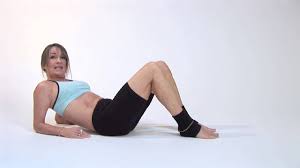
1. Ab Scoop
Exercise: Ab Scoop and Chest Lift
Target region: Abdominals, particularly the rectus abdominis or six-pack.
Not a crunch, this. As you utilize your abdominals to control a steady, smooth curl up and roll down, you must really pull them all the way down into a deep scoop. One of the Pilates secrets is the precision required for this kind of scoop.

2. The Hundred
Exercise: The Hundred
Target region: Abdominals, breathing
You need to breathe into your lower ribs and back since your abdominal muscles will be tightly contracted. Don’t rely solely on your neck and shoulders to support you; instead, use your abs.
3. The Roll Up
Exercise: The Roll Up
Target region: Abdominals
Roll up and down with control by engaging your abdominals. Do not rely on your legs rising off the mat or on momentum. This is where you develop the control that is a major component of Pilates.
4. One Leg Circle
Exercise: One Leg Circle
Target region: Abdominals, thighs, hip flexors
As the leg moves, the abdominals maintain the pelvis’ stability. No swaying back and forth! Use all of your available motion without letting go of control.

5. Rolling Like a Ball
Exercise: Rolling Like a Ball
Target region: Abdominals, spinal mobility
Keep your curvature throughout the entire workout. Instead of falling back or using momentum, start the rollback with your abs.
6. Open Leg Balance
Exercise: Open Leg Balance
Target region: Abdominals, hamstring mobility
To control the pose, engage your back muscles and abdominals. keep your arms and legs as straight. and Keep trying
7. The Side Kick Series
Exercise: Side Kick Series
Target region: Abdominals, all thigh muscles—particularly inner thigh
Work both the chest and the legs. Each repetition performs with the ribs supported. Do not allow them to touch the ground.
8. Front Support/Plank
Exercise: Front Support/Plank
Target region: Back extensors, abdominals, shoulders, arms
From your heels to your ears, maintain a straight line. Although there is some emphasis on the upper body, the exercise will be simpler if you use your legs and visualize your gluteal squeeze together.
9. Saw

Exercise: Saw
Target region: Hamstrings, inner thigh, obliques, back mobility
As you spin to the side, keep your hips firmly in place and level. When extending forward, use opposition to simultaneously reach back.

10. Mermaid
Exercise: Mermaid
Target region: Side stretch
As you stretch, bend your body directly sideways as if you were trapped between two panes of glass. Keep the hip that is being stretched down.
11. Swan Prep
Exercise: Swan Prep
Target region: Back extensors, abdominal stretch
In contrast to the numerous forward flexion movements we perform in Pilates, the swan offers an excellent counter stretch. This is a routine action.
12. Wall Roll Down
Exercise: Wall Roll Down
Target region: Abdominals, back, and hamstring stretch
Use this exercise as a bridge between your Pilates regimen and your daily activities to maintain good posture. Include this movement in your regular routine.
13. Leg Taps

Start out on your back with a flat spine and your legs bent at the hips and knees by 90 degrees. Keep your non-working leg down (knee bent, foot flat) if stabilizing the table top is too difficult or painful. Take a deep breath in and lower one foot towards the mat while keeping the other knee bent at a 90-degree angle. After exhaling, use your core to raise the leg back to the table top. Keep in mind to maintain a flat back. Go as low in the range of motion as you can while maintaining a flat spine.
14. Half Roll Back With Circle
Start by sitting up straight on your sit bones, with your legs either together or at hip distance. Inhale to prepare, and on your exhalation, keep your feet down and roll halfway back, forming a C-curve in your lower back, while holding a Pilates ring in between your knees. Breathe in to hold, and exhale to ten times squeeze the ring in your hands. To get back to starting position, inhale.
15. Half Roll Back With Rotation
Start by sitting up straight on your sit bones, with your legs either together or at hip distance. Inhale to prepare, then on your exhalation, keep your feet down and roll halfway back to form a C-curve in your lower back while gripping a Pilates ring in between your hands. Holding the ring between your hands 10 times, exhaling to rotate it to one side. Exhale to the other side after inhaling to hold.
16. Side Leg Lift With the ball
Beginning reclining on one side, place your top hand in front of your body for balance and your head on your bottom arm. Inhale to prepare and exhale to lift both of your legs off the mat, keeping your legs straight and parallel to one another. Avoid letting your legs touch the ground and keep them together. Add a ball between your ankles to make the exercise more difficult.
17. Hip Rolls With the ball
Starting off with a neutral spine, lie on your back. Prepare yourself by inhaling before flattening your back and articulating each vertebra of your spine one at a time. Hold at the top while inhaling, and then slowly squeeze the ball for 10 to 20 squeezes. Breathe in and out slowly while giving your hips 10 to 20 pulses. Exhale to roll back down to the mat and inhale to hold.
18. Side Lying Hip External Rotation
Your legs and hips should be bent at a 90-degree angle while you lay on your side. Your knees should be covered by the band. Exhale while you keep your heels together and your hips stacked while opening your knees up to the height of your hips. Inhale to prepare. For one rep, stoop to the starting position. (If this is too strenuous, throw the resistance band away.)
19. Hip Extension
Start on all fours, stacking your hips over your knees and your shoulders over your wrists. As you inhale, extend your back leg. Take a deep breath out and raise one leg only as high as your back stays flat like a table (avoid allowing the spine to arch). As you exhale, lower your leg. Lift your leg up as you exhale. leg Note: You can execute this exercise with a ball at your knee, a bent or straight knee (for more advanced users), or both.
20. Shoulder Extension With Rotation
Start on all fours, stacking your hips over your knees and your shoulders over your wrists. The right hand should hold a light dumbbell. As you rotate your body to the right to open your chest towards the ceiling, inhale to get ready and then exhale to stretch your arm straight back towards your hip. With your shoulders square to the mat, lower your arm, and exhale to get back to the starting position. Stretch between the sides when in a child’s pose.

21. Swimming Prep
Start on all fours, stacking your hips over your knees and your shoulders over your wrists. Prepare yourself by inhaling, then on your exhalation, extend your right arm and left leg. To decrease to the starting position, inhale. Reach your left arm forward and your right leg back as you exhale and exchange sides. Inhale to begin lowering. Reduce to begin.
22. Toe taps

Knees bent, feet parallel, and hip-width apart while you lay on your back.
Take one leg onto a table top as you exhale (similar to the exercise above).
To maintain the position, inhale.
Without snapping your core muscles or arching your back, exhale as you bring the second leg onto the table top.
the posture, inhale.
Exhale gently and steadily while supporting your other leg and placing one foot on the ground.
Leg back to the table top with an inhale.
Continue with the other leg.
Pilates Exercises for low back pain
1. Bridging
Knees bent and arms at your side, lie on your back. Keep your core firm and avoid arching your lower back by lifting your butt off the ground to form a straight line from your knees to your shoulders. retake the initial position.
2. The Hundred
Lay on your back with your head and shoulders raised off the mat and your legs bent at a 90-degree angle. Pulse your arms up and down in small movements while engaging your core muscles on the mat. If you’re just getting started, attempt 50 pulses instead of the 100 that are the ultimate aim.
3. Swimmers
While lying on your stomach with your arms extended and your head and neck raised off the floor, simultaneously lift the opposing leg and arm, hold for a brief while, and then lower them back to the initial position.
4. Spine Stretch

Sit with legs straight and shoulder-width apart. Your feet flexed and your knees are towards the ceiling.
Keep your shoulders relaxed.
Inhale deeply, then raise your arms.
You can also put your fingertips on the ground in front of you, in between your legs.
As you extend your spine to bend forward, exhale. Your goal is to create a deep C-curve. Don’t give in. Allow your abdominal muscles to assist you as you move up and over.
5. The Saw
Straighten your back while sitting. Your front legs are extended, approximately shoulder-width apart.
Stretching your arms out to the sides while keeping your shoulders level.
When you inhale, raise your head and turn your entire torso while maintaining an equal posture with your hips. Your spine follows your sight.
Exhale: Stretch forward and place the little finger of your front hand across the outside of the other foot, letting your sight follow your backhand. Keep your hips level and down.
Maintain your position while you breathe in and return to sitting after your reach has reached its maximum extension.
After exhaling, reverse your rotation and return to the beginning position.

6. Cat-Cow
For the cow pose, inhale and tilt your pelvic back; for the cat position, exhale and tuck your tailbone.
The exercise alternates between a backstretch and a back extension. Your routine’s inclusion of this exercise assists to build flexibility.

7. Oblique Supine
Your right arm should be straight out to the side as you are lying on your back with a towel rolled up between your bent knees (ankles should still be on the ground). Exhale as you tighten the towel over your knees and slowly lower both of your legs to the left. Inhale. Hold for a moment to extend your side, and then raise yourself back up to your starting posture. Drop your knees to the right and switch your hand position to the left. For 20 seconds, keep up the stretch.
8. Thigh Stretch
Put your hands fist-distance apart and kneel on a mat.
Squeeze the mat with the tops of your feet. Raise your arms in the air.
Maintain a flat back while dropping your arms and slouching. Without arching your back, lean back just enough to feel your thighs expand.
As you raise back up to the starting position, raise your arms.
Repetition: 5–8 times.
9. Pelvic tilt or Imprinting
This easy but efficient workout activates the deep abdominal muscles and strengthens the spine’s support system.
Lie on your back in a neutral spine, With your knees bent and your feet flat on the floor (a position with relaxed back muscles and natural curves, also known as “ladybug bug tunnel”).
Lift your pelvis and imagine “tilting” it back to flatten your back or “imprint” your spine as you exhale. The deepest region of your abdominals, the transverse abs, are the ideal muscles to Kegel and contract at this moment. You may also refer to these as your pelvic floor muscles.
You should inhale deeply and gently articulate your spine as you exhale. You should flatten your back and tilt your pelvis forward again to reach your neutral spine.
10. Supine Spinal Twist
Controlling rotation creates the oblique muscles to stabilize the spine even more while stretching the back muscles. With your arms out to the sides and your knees bent in the right grounding position, lie on your back.
As you slowly move your knees to one side while keeping your spine in neutral alignment, squeeze your knees together (you may want to place a cloth under your lower back if you experience any pain).
Exhale, drawing your belly button closer to your spine and dragging your legs back to the middle.
3–5 times on each side, alternate sides, and repeat the exercise. For your body to truly experience the stretch, attempt to keep the stretch position for 10 to 15 seconds.
11. Roll Backs

In this exercise, the spine is moved by contracting the abdominal muscles, which serves to strengthen the core and abdominals as well as stretch and release tension in the back muscles. Your spine is getting stronger, and you’re also getting more mobility.
To give your pelvis independence to tilt forward, sit tall with your feet flat on the floor and your legs comfortably bent out in front of you. Hands are put on the thighs’ backs.
After exhaling, scoop your tummy and roll backward, starting at the tailbone, until your arms are straight and your entire spine is bent into a C shape. The navel should feel as though it is pulled backward the most.
Hold still and take a breath. Exhale, move your body forward while maintaining a C-curve until your shoulders are over your hips, and then stack your spine to stand tall and straight. 6 to 10 times.
12. Chest lift

This exercise will help you develop a stronger core, which will support your lower back.
Knees bent, feet flat on the ground, and hands behind the head, lie on your back in a neutral spine position. Using the pelvic floor and other core muscles.
Exhale while lifting your head and chest, making sure your pelvis is still (not tilting towards you), and visualize drawing your belly button into your spine.
To put your head back down, take a breath.
You can lift your legs into a table top position or move into hundreds if you want to take this to the next level. This is possible at all levels: with the legs straight, bent, or at a 45-degree angle.
13. Swan prep

Layer your hands beneath your forehead while lying on your stomach. Lay out your lengthy legs on the mat. Make sure you’re not separating or turning them out. It’s acceptable to separate them by roughly a hip’s distance if you have lower back problems. Keep them side by side. Your front hip points should feel like they could lift off the ground when you reach your tailbone towards your heels. Although it is impossible, you want their energy to lift you up.
Lift your hands, elbows, head, chest, and shoulders off the mat without raising your legs or bending at the waist. however, drop back down after approximately one or two inches. Repeat.
14. Kneeling Arm and Leg Reach
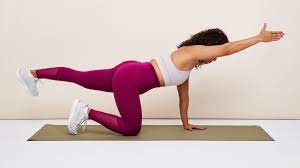
Bend down on your knees and begin.
Your knees are just beneath your hips, and your hands are directly beneath your shoulders. Ensure that your feet and legs are hip-distance apart and parallel.
Your back supported by your pulled-in abdominal muscles and is in a neutral spine posture, allowing for its natural curves. Keep your back straight and flat.
Look down with your face parallel to the ground.
Look at shifting your scapula (wing bones) down your back so that your chest is open, your shoulders are away from your ears, and your scapulae positioned on your back.
Inhale: Put your left leg straight behind you and your right arm straight out in front of you. The floor will be parallel to your arm and leg.
Return to your hands and knees after holding and then exhaling.
15. Supine Twist With Knee Sways
Lie on your back with your legs up on a table and your arms at your sides. Maintain a tight grip on your knees and ankles while keeping your shoulders on the mat. While maintaining an even stack of knees, rock your ankles and knees to the right. Your left shoulder cannot come off the mat, only your left hip. Pull your pelvis and legs back to the starting position using your abdominals. Continue to the left. Do three sets of 10 reps.
16. Leg Slides
Lie down on your mat.
Place your elbows and forearms down while leaning back.
Remove your head from your tailbone. To make room in your lower back, open up across your chest. Lay out your lengthy legs on the mat. Keep your toes and knees touching. Drag your heels towards you while keeping your legs together and your heels on the ground. As you exhale, bend your knees. Start by inhaling and raising your legs backward. Perform 12 repetitions.
Pilates for Pelvic Health:
1. Pelvic Clock (supine/ crook-lying):

Knees bent 90 degrees and keep your feet flat on the floor, lie on your back.
Put your hands on your lower belly after bringing them together. You will be better able to feel pelvic movement as a result.
As you inhale, turn your clock to the side so that the hip at 3 o’clock is lower. Continue rotating the pelvis around the clock while inhaling, tilting it until the six o’clock position is lowest. Your low back will develop a slight arch as a result.
Exhale: Rotate the action so that the hip at 9 o’clock is downward. As you bring your navel (located at 12 o’clock) back to the low point, exhale as you do so. Repeat the cycle in the opposite direction, moving the 3 o’clock hip down.
Two or three times in each direction, repeat, and then go the other way.
2. Bridging (supine/ crook-lying): Posterior pelvic tilt pelvis, and afterward elevate the pelvis.
Knees bent and arms at your side, lie on your back. Keep your core firm and avoid arching your lower back by lifting your butt off the ground to form a straight line from your knees to your shoulders. retake the initial position.
3. Chest-lift (supine/ crook-lying): Interlaced hands place behind the head, and the cervical and thoracic spines then flex segmentally.
This exercise will help you develop a stronger core, which will support your lower back.
Knees bent, feet flat on the ground, and hands behind the head, lie on your back in a neutral spine position. Using the pelvic floor and other core muscles.
Exhale while lifting your head and chest, making sure your pelvis is still (not tilting towards you), and visualize drawing your belly button into your spine.
To put your head back down, take a breath.
You can lift your legs into a table top position or move into hundreds if you want to take this to the next level. This is possible at all levels: with the legs straight, bent, or at a 45-degree angle
4. Hundred (supine):
Bilateral arms pump up and down at the sides of the torso as the legs are at a table top and the cervical and thoracic spines are in flexion.
5. Roll-up (supine):
Cervical, thoracic, and lumbar spine segmental flexion. As you curl your body up and over, squeeze your abs and reach for your toes.

6. Leg-circles (supine):
Unilateral perpendicular leg circles in both the clockwise and anticlockwise directions while keeping the pelvis steady.
7. Side-kick kneeling:
Pressure anteriorly and then posteriorly while elevating the superior leg to hip height. Start with kneeling and tilting your trunk in that direction. With the fingers pointing away from the knee, place one palm on the mat. With the elbow bent and pointing up towards the ceiling, place the other hand behind the head. To about hip height, raise the upper leg—the one that is furthest from the support arm.
Inhale. Move the lifted leg in front. See the primary depiction of the muscle.
Exhale. Move the lifted leg backward. Five times through the series.
On the other leg, repeat the same process.

8. Adductor Squeeze (crook-lying/supine):
By squeezing a ball and gently pressing the ball or cushion against your thighs, squeeze them together. Hold for 10 seconds, then unwind while keeping the ball in your hand.
9. (Supine/Crooked) Bent Knee Fall Out:
Pelvic stabilization during unilateral abduction. Lower one knee out to the side while keeping your knees bent, then bring it back. – Place your fingers on your hip bones to feel for any movement. – Try to maintain your abs strong to stabilize your pelvis (hip bones). – Make an effort to reduce or stop any motion occurring between your fingers.
10. Supine Arm Series: Arm exercises in flexion, abduction, and rotation while stabilizing the trunk.
11. a four-point kneeling:
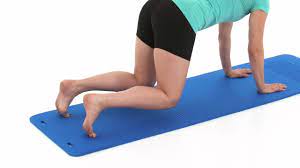
Place your knees and hands under your hips to begin. shoulders are in a neutral position.
Find where neutral is by tilting your pelvis anteriorly and posteriorly; there should be a small curve in your lower back.
To activate your CORE, draw in through your lower abdomen.
Raise one arm, slowly stretch it in front of you, and then bring it back to the beginning position. Repeat each upper and lower limb. Throughout, maintain neutral spinal alignment.
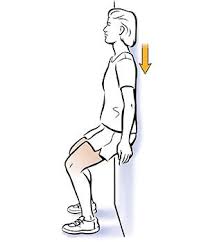
12. Roll down series (seated): Backing up and bending the spine in segments while keeping the PFM active.
13. Assisted Squat: Squat while tightening your core and stabilizing your back.
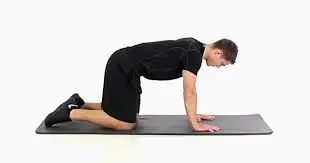
14. Quadruped Plank
Start on your hands and knees with your shoulders exactly over your wrists and your hips directly over your knees. To strengthen your core and activate your pelvic floor muscles, tuck your pelvis in. Lift your knees a few inches off the ground while pressing your hands into the ground. Bring your knees back to the floor while continuing to breathe in and out as you draw your abs in and your pelvic floor up for five to ten seconds. Repeat 5 times.

15. Frogger
Stack your knees over your hips while lying on your back with your legs in a table top position. Your hands should be at your sides. Open your knees wide to the sides, flex your feet, and bring your heels together to form a V. Push the floor with your lower back. Extend your legs straight out while taking a breath to ensure that your core is fully braced and your pelvic floor muscles are engaged. Maintain the V-shape with your feet as you extend your legs for maximum core engagement. Re-establishing the V position with your feet and knees, exhale while relaxing your muscles. Perform 10 repetitions.
16. Flat Back Hinge
Your hands should be behind your head while you sit on the ground with your legs extended in front of you and your feet hip distance apart. Squeeze your sitting bones to activate your core while maintaining a neutral pelvis. Then, take a deep breath in and swing your torso back until you feel the strain in your abs. However, maintain a flat back the entire while. Exhale and return to the starting posture after contracting your pelvic floor muscles for three counts. Perform 10 repetitions.
17. Bird Dog
Start on your hands and knees with your shoulders exactly over your wrists and your hips directly over your knees. Maintain a neutral spine and pelvis while contracting your pelvic floor muscles. Straighten your right leg behind you and your left arm in front of you as you inhale. Exhale, bringing your arm and leg back to the starting position while relaxing your core and pelvic floor muscles. Repeat the same with the other side. Continue alternating, complete five to ten repetitions on each side.
18. March
Breathe deeply as you inhale and press your lower back into the floor while maintaining a neutral pelvis position while lying on your back with your knees bent and your feet flat on the ground. With your knee bent at a 90-degree angle and your shin parallel to the floor, lift your left foot off the floor while bracing your core and using your pelvic floor muscles to help you. Return your foot to the ground slowly. 10 repetitions on each side.
19. Ananda Bal Asana
With your feet up in the air and your knees bent, lie on your back. Holding your big toes with your fingers, keep your pelvis neutral, and press your tailbone to the floor. Your pelvic floor will actively stretch in this position, which will cause it to relax.
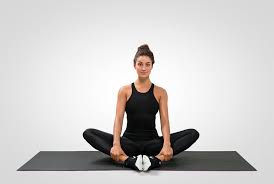
20. Open butterfly stretch on a ball
With your legs spread wide, sit on a tiny stability ball like this one. With your arms straight on the floor, lower your chest towards the floor. On the ball, sway your hips from side to side. Your pelvic floor will actively extend in this position, which will also increase blood flow.
21. Bent leg circles
Lay on your back with your spine and pelvis neutral. Put your legs up like a table top. Start by circling your legs in opposing directions from one another while resting flat or elevating your neck and shoulders slightly with your hands clasped behind your head. Then repeat going the other way. This exercise will help to relax the hips while strengthening the inner thigh and pelvic floor muscles.
22. Standing leg lifts
Standing while working your balance and using your core allows you to train your core on a deeper level. To feel your core engage, try bending your leg and raising your knee as high as you can. You can leisurely march in place or transition from a lunge position into a knee lift (try Bartha’s program starting at 15 minutes in the workout above).
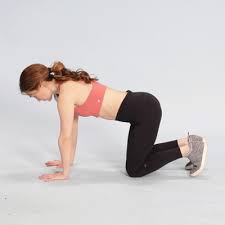
23. Bear plank
Start on your hands and knees with your spine in a neutral position, your wrists directly beneath your shoulders, and your knees directly beneath your hips. Lift your knees an inch off the ground while engaging your core. Repeat a few times in a row, holding for a few breaths before bringing the knees down.
Pilates during Pregnancy:
1. Pelvic floor muscle exercise
Reduces difficulties during and after birth by strengthening pelvic floor muscles. With your legs crossed and your butt on the heels, crouch on your knees. You may alternatively decide to lie down on your back with your knees bent and your head up.
Consider yourself attempting to resist the urge to urinate. You’ll feel your muscles contract.
Ten seconds of holding this position, followed by a slow relaxation.
Do it ten times.
2. Deep tummy strengthening
Provides more back support. With the knees slightly bent, lie on one side. Inhale deeply and exhale slowly. then make an effort to draw the stomach in towards the spine.
Additionally, you might try simultaneously contracting the pelvic floor muscles.
Hold this posture for ten seconds at most.
Repeat ten times while softly relaxing your abdominal muscles.
3. Pelvic tilts
Strengthens your pelvis and lower back. The supine position is use for this workout. So, before attempting this, speak with your personal trainer. Lay on your back with your knees bent and your head and shoulders elevated on a pillow. Slowly inhale.
Using your abdominal muscles, lower your back while exhaling.
Hold for roughly 5–10 seconds.
Five to ten times repeat it.
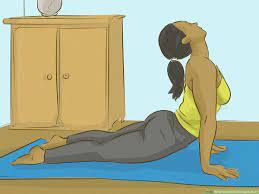
4. Upper back stretch
Enhance your posture. Put your hands behind your head while sitting cross-legged with your back straight.
Inhale gently.
Exhale while pulling in your stomach and extending your back while gazing up at the ceiling.
Squeezing your shoulders together, take another breath, and then return to the starting posture.
Five to 10 times are sufficient.
5. The cat stretch
increases back muscles’ strength. Get down on all fours and start by keeping your hands and knees under your shoulders and hips, respectively.
Inhale while relaxing your stomach. Draw the belly in while exhaling, arch your back up, bend your head down, and focus on your stomach.
Regain your breath by slowly returning to your starting position.
The same should be repeat for five to ten times.
6. Thigh stretch
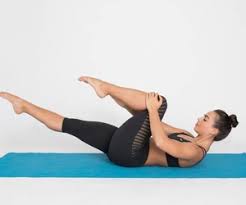
Increases the strength of the lower back, hips, and buttocks. Pull in your abs while kneeling down on a carpet or mat with your knees hip-width apart.
Squeeze your butt and lean back as you raise your arms parallel to the ground with the palms facing down.
Exhale while you drop your arms.
Resuming from the beginning.
7. The sword
Strengthens the back, legs, and abdominal muscles while enhancing balance. Your feet should be wider than your hips as you stand.
squat with your knees bent and move your right hand toward your left knee.
As you would if you were pulling a sword from your hip belt, raise your right hand now upward and to the right. While doing so, keep your eyes fixed on the hand.
Do the same on the left side.
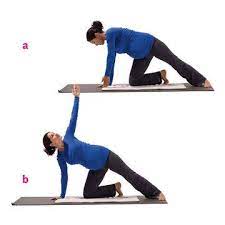
8. Sword arm
Strengthens the abs, arms, back, and hips while enhancing balance. Place both hands on the ground and bend your right knee. With the hips looking upward and the abdomen pulled in, extend the left leg.
Inhale as you raise your left hand to the sky and gaze up at it.
Lower the hand to the beginning position to exhale.
Repeat on the left side after switching.
9. Wagging the tail

Strengthens the lower back and abdominals and increases flexibility and stability. Keep your wrists in line with your shoulders as you begin on all fours.
Suck in your stomach, raise one knee, and move the leg in a circle.
Do the same with the other leg.
Repeat between three and four times.
FAQS
There are common five types of Pilates: 1. Classical Pilates.
2. Mat Pilates.
3. Contemporary Pilates.
4. Reformer Pilates.
5. Clinical Pilates.
The primary physical difference between Pilates and yoga is that Pilates uses movement to stress your stability while yoga focuses more on keeping static positions. Pilates focuses on strengthening the core muscles and improving body alignment, whereas yoga focuses on relaxation and flexibility.
Pilates is a type of exercise that targets deep postural muscles to retrain them and enhance core stability. To assist you enhance your strength, coordination, and flexibility, the physiotherapists will incorporate Pilates into your exercise regimen in addition to treatment. Or perhaps you might like to enroll in one of the Pilates sessions. Pilates is a type of exercise that focuses on strengthening the body with a focus on core strength. This contributes to overall fitness and well-being. Pilates, like Yoga, focuses on posture, balance, and flexibility.
Pilates improves awareness of good posture and optimal spinal alignment, so you can immediately fix a slump, hunch, or hip dump if you notice it occurring. In other words, Pilates will help you treat the cause—unhealthy movement patterns—and the symptoms—back pain and discomfort. Pilates workouts could help relieve some of your discomfort. Bulging discs are typically caused by natural aging wear and strain. Exercise to strengthen the muscles in your back can help relieve some of the pain caused by your bulging disc.
Pilates exercise for strengthening the muscles of the pelvic floor is bridging. other exercises are chest lifts, pelvic clocks, roll-up, and leg circles.
Pilates workouts can combine with breath work to strengthen the pelvic floor and core. The transversus abdominis and pelvic floor contract during exhale, while the diaphragm contracts and the pelvic floor lengthens during inhalation.
Pilates places a strong emphasis on the deep core muscles while also promoting balance in the mobility and strength of all the body’s major muscle groups. It enhances body awareness, flexibility, strength, balance, and posture, enhanced muscle tone, especially in your lower back, hips, and buttocks (your body’s “core muscles”) strong, balanced muscles on both sides of your body. improved skeletal muscle control in your back and limbs.
Back pain, Spinal problems, Arthritis, Poor posture, Injury Rehabilitation, and Prevention, Before and after pregnancy, Neurological conditions, Chronic pain conditions, Post-surgery
Actually, Joseph Pilates’ students were the ones who came up with the six Pilates principles 1. breath, 2. concentration, 3. control, 4. precision, 5. center, and 6. flow). To make his teaching style understandable for upcoming generations of students, they collected his beliefs into 6 basic concepts.
Pilates is a form of functional exercise that emphasizes the four S’s of strength, stamina, Stretch, and stability in order to improve mobility. Unintentionally, these working points are incorporated into every Pilates movement.

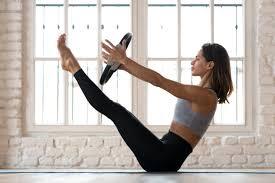
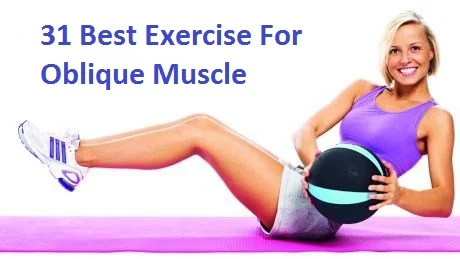

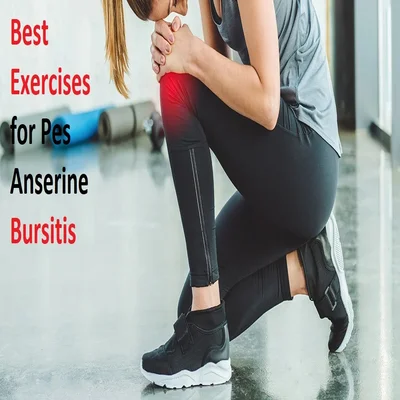
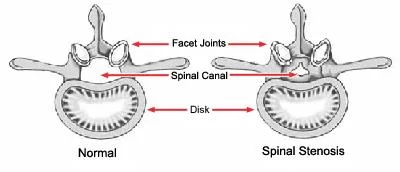
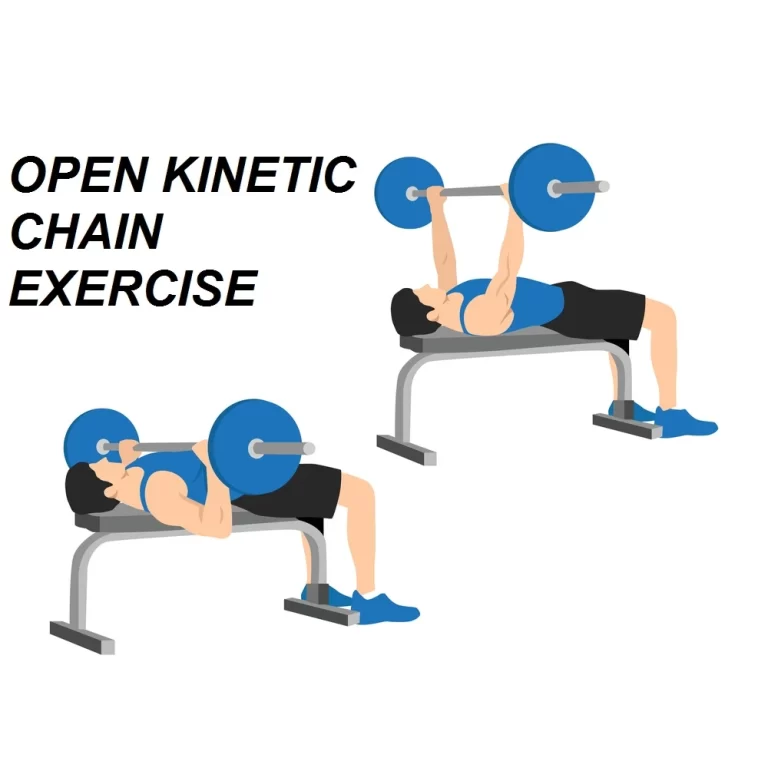
13 Comments